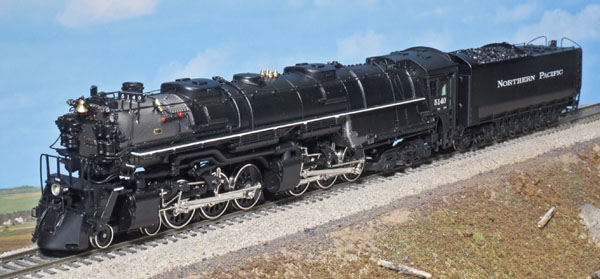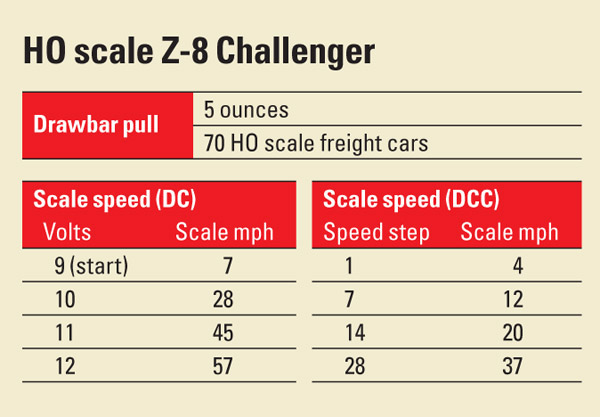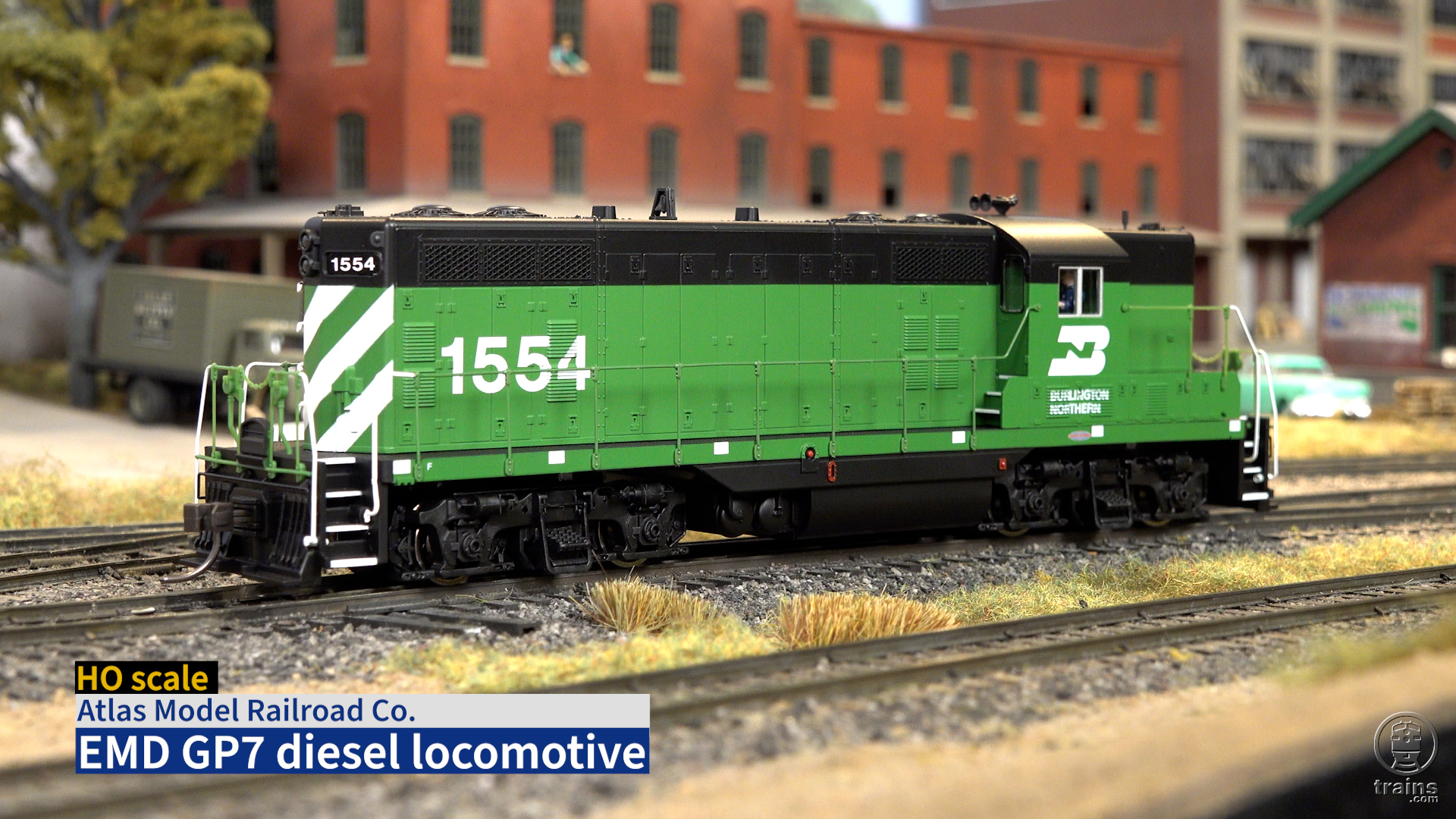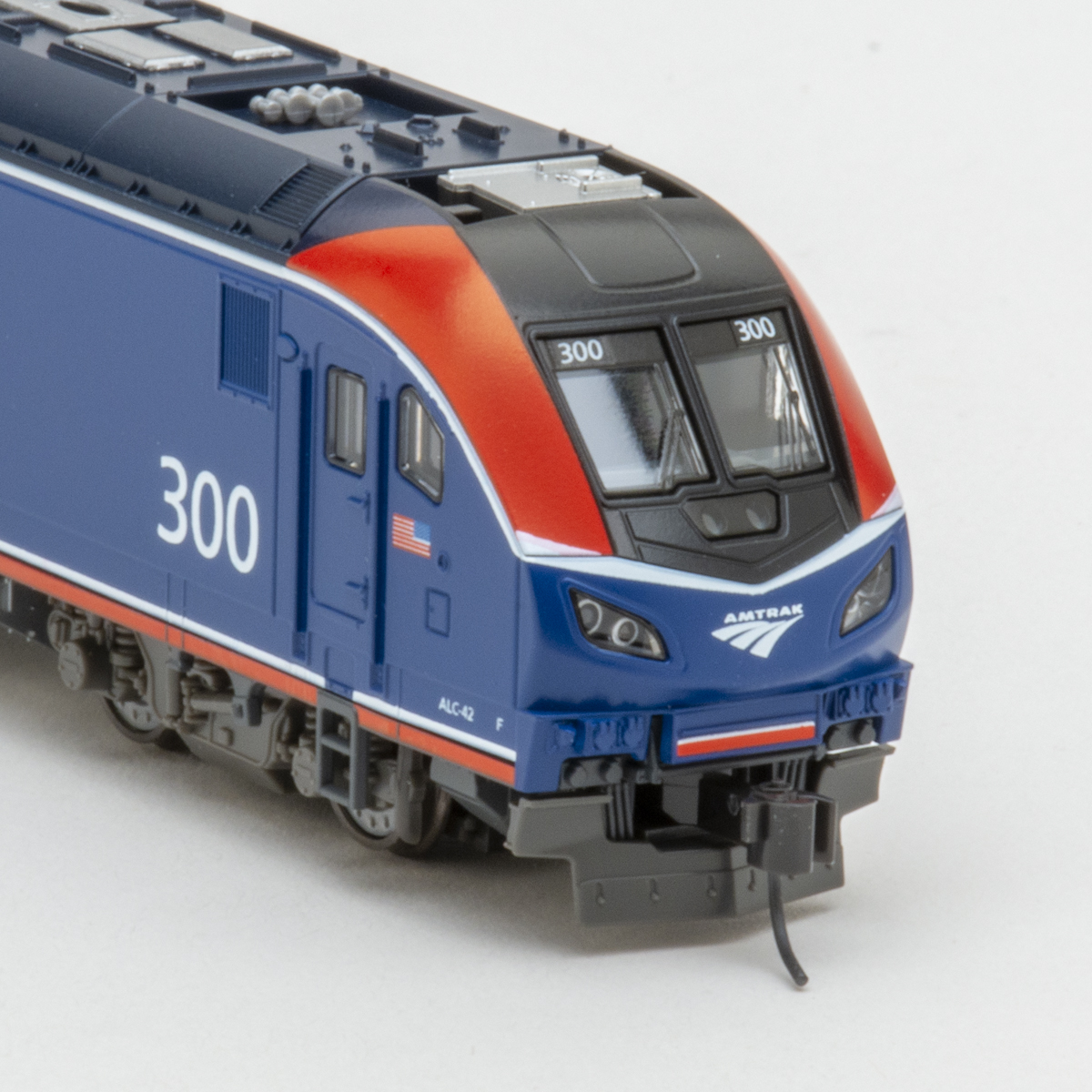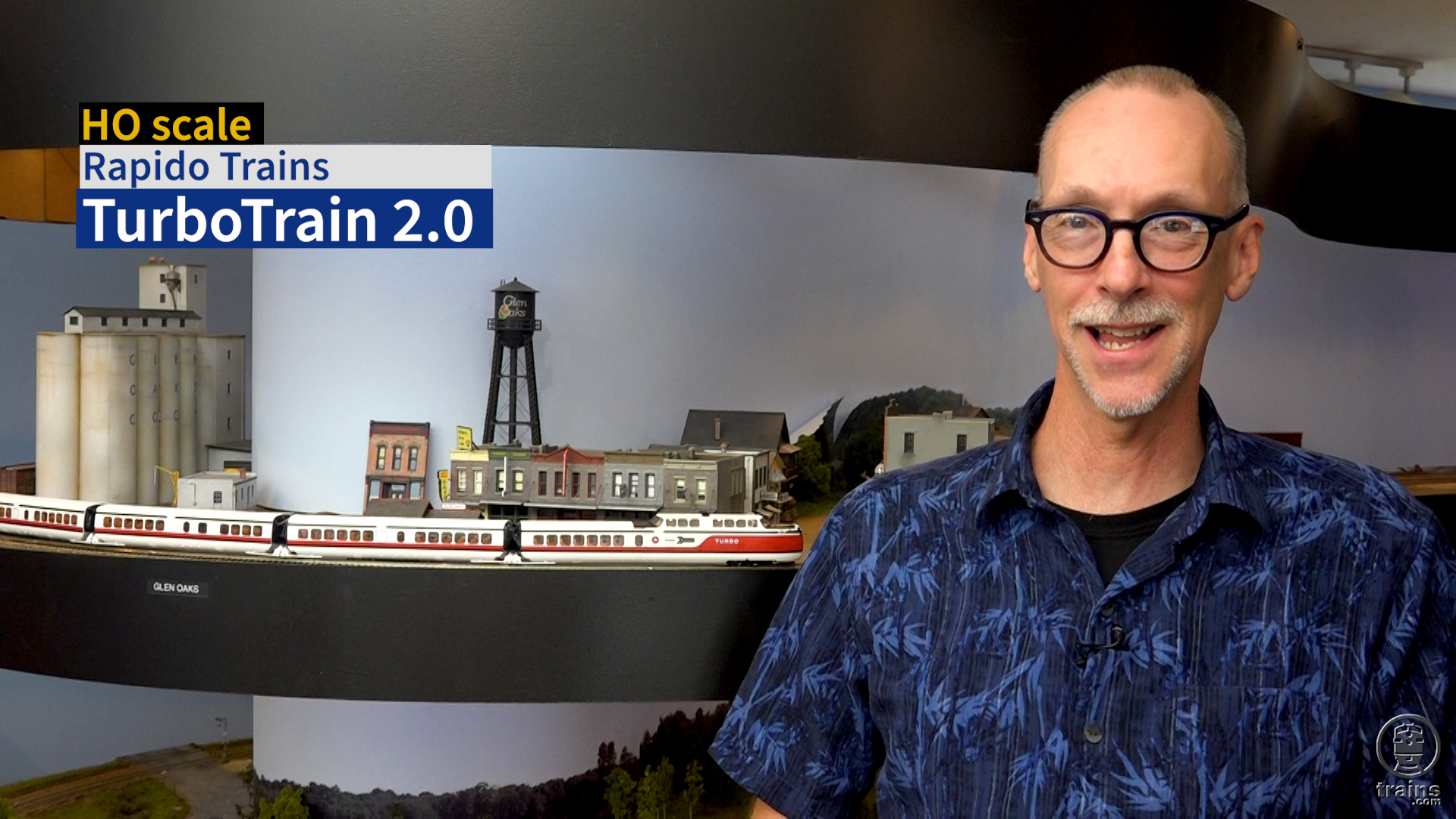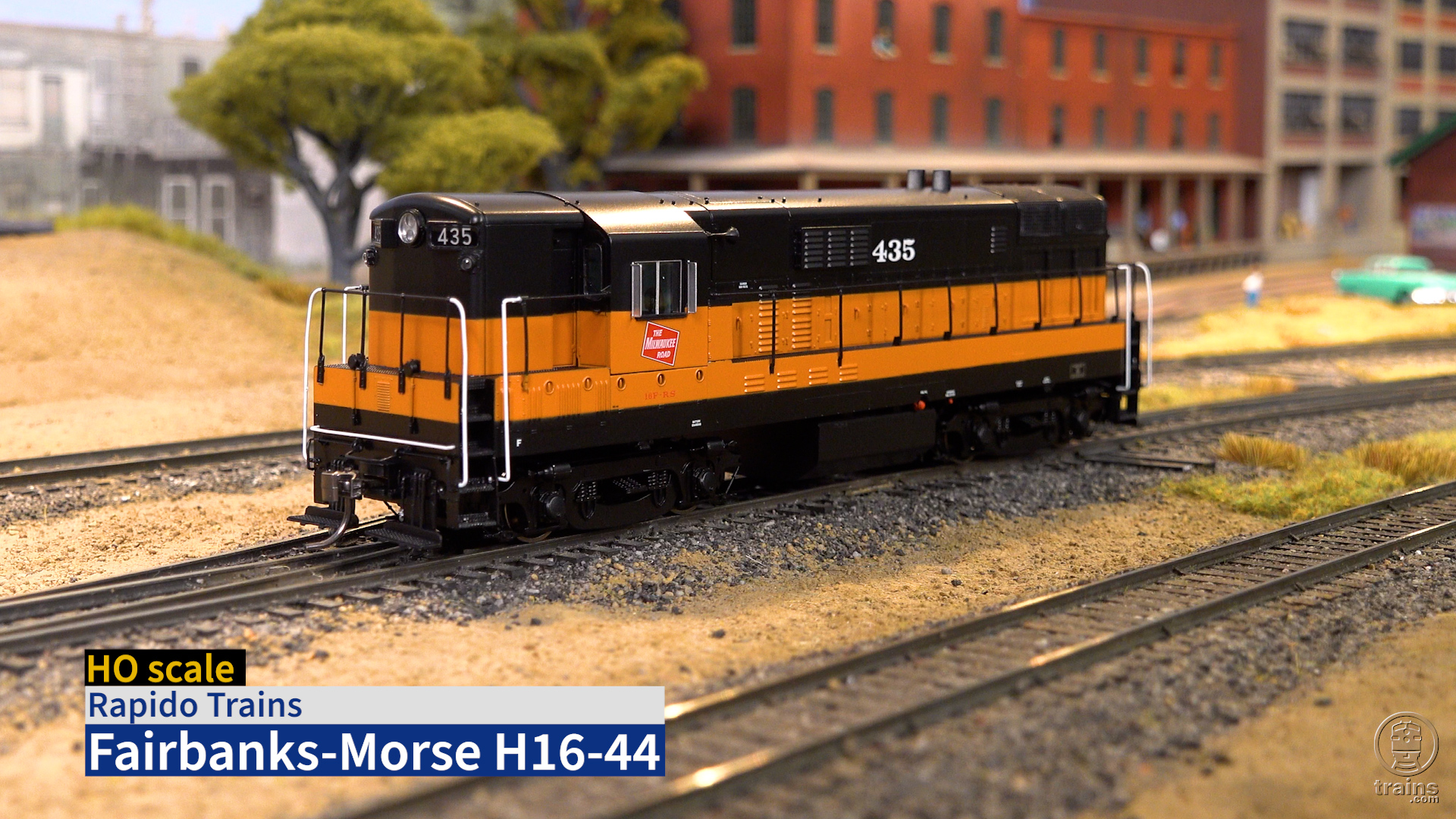The pinnacle of steam. During World War II, steam locomotive technology reached its peak. The supremacy of the diesel was on the horizon, but thanks to the federal War Production Board, when NP needed mainline motive power for its Yellowstone, Idaho, and Rocky Mountain divisions in 1943, the only choice was a near-duplicate of its class Z-7 articulated 4-6-6-4 Challengers.
Northern Pacific placed an order with Alco for 20 new 4-6-6-4s. Twelve arrived in 1943, eight more the next year. They were numbered 5130 through 5149. Two more oil-burning versions were delivered to the Spokane, Portland & Seattle.
These Challengers differed from earlier models built for the Union Pacific primarily in their larger fireboxes, which enabled them to burn lower-quality Rosebud coal, plentiful along the NP’s lines. The NP Challengers also mounted their headlights on the front engine, rather than on the smokebox front, which was instead occupied by a pair of air compressors.
Though the locomotives’ pulling power was higher than any other NP engine on the rails, it was lower than expected, due in part to the burning of Rosebud coal. Boiler leaks also developed, requiring the engines to be run at lower pressure. As the first freight diesels arrived on the NP in 1944, steamers were bumped to less-critical routes. Half of the Z-8 Challengers were scrapped in 1957, the rest a year later.
First look. Sunset’s HO scale Challenger is an impressive model, stretching over 17 inches long with tender and weighing 23⁄4 pounds. The model bristles with wire and cast-brass details, including hinged tender water hatches with grates, a pivoting tender diaphragm, and sprung, opening cab doors. A fold-down dummy coupler is on the pilot; the tender is filled with a glistening coal load. The paint job is smooth and even.
I found a scale drawing of the NP Z-8 in the May 1974 Model Railroader, and all the model’s dimensions matched the drawing. The model also matched photos of the prototype that I found in Alco Reference no. 1 by Bob Liljestrand (The Railroad Press), the 1944 edition of Locomotive Cyclopedia of American Practice (Simmons-Boardman), and David P. Morgan Memorial Library files.
An interesting feature of the Z-8 is its unusual trailing truck, with one 36″ wheelset and one 44″ set. On the model, this makes the trailing truck look like it’s off the rails, even when it isn’t. The locomotive tracked well, backing up through no. 6 turnouts and around 27″ curves. (The model is rated for curves no smaller than 30″ radius.)
The locomotive drawbar has two holes in it for the pin on the tender, about a scale foot apart. Using the closer hole would put the diaphragm only a few scale inches from the cab for a more realistic appearance, at the cost of broader curves. But I was unable to couple the tender this closely. The stoker, which projects from the front of the tender, bumps up against a rounded projection on the back of the locomotive, preventing close coupling. I didn’t see an easy way to remedy this.
I was pleased when the sounds started up at just 4 volts, without stuttering or hesitation. The dual speakers housed inside the tender filled the room with the clank and hiss of compressors, valves, and generators.
At just under 9 volts, the locomotive started rolling smoothly. I could hear the chuffs of the two engines going in and out of phase, just like on the prototype, a realistic feature not always duplicated in models. The bell, triggered by toggling the power pack’s direction switch back and forth while the locomotive was moving, and the whistle, activated by a single flip of the direction switch, sounded like prototype recordings.
The DCC decoder supports 28 or 128 speed steps. The locomotive didn’t start moving until speed step 7. To remedy this, I increased the value of Vstart (configuration variable 2) to 78. After I did this, the engine responded to speed step 1 by rolling at 4.2 scale mph. The model reached a top speed of 37 scale mph – odd, considering it had hit a more prototypical top speed of almost 57 scale mph under DC. I set CV5, Vhigh, to the maximum value, but the top speed under DCC didn’t change.
Unleash the Titan. The QSI Titan is touted as being the first sound decoder to have stereo sound. Since both speakers are housed in the locomotive’s tender, next to each other, I found it hard to distinguish stereo separation between the sounds coming from each.
User-triggered sound effects include the bell, whistle, coupler crash, and squealing brakes. Function 9 allows the modeler to increase or decrease the intensity of the chuffs, while the locomotive speed remains constant.
The real benefit of the dual speaker system is in sound volume and clarity; having two speakers means the Titan decoder can pump out more sound with less distortion. In fact, the Challenger is easily the loudest HO model locomotive I’ve ever tested. I used CV51.0 to reduce the overall system volume to 50 percent.
There are options to control the volume of individual sound effects, re-map decoder outputs to different throttle function keys, select different bells and whistles, change how often ambient sounds like the air compressor play – basically, if the locomotive does it, the Titan decoder has a CV that controls it. If you’re the type of person who likes to manage your locomotives to duplicate every facet of prototype practice, this is probably the decoder for you.
King of the rails. Just as the class Z-8 Challengers represented the pinnacle of steam on the Northern Pacific, you’d have a hard time finding a more accurate or attractive HO steam engine than Sunset Models’ brass Z-8. Its powerful drive train, realistic sound effects, and QSI Titan decoder suit it perfectly for the same job it performed on the prototype, hauling important fast freight over the mountains. Give it a look.
Manufacturer
Sunset Models
16 Beta Court
San Ramon, CA 94583
www.3rdrail.com
Road names: Northern Pacific (coal tender) and Spokane, Portland & Seattle (oil tender)
Era: 1943 to 1958
Features
- All-metal construction
- Canon motor with flywheel
- LED headlight and backup light
- Electrical pickup on all drivers and tender wheels
- Fold-down dummy pilot coupler
- Kadee knuckle coupler on rear, at correct height
- Minimum radius: 30″
- Movable diaphragm on tender
- Opening tender water hatches
- QSI Titan DCC sound decoder with dual speakers
- RP-25 wheels (front pilot wheels .008″ too tight according to National Model Railroad Association S-4.2)
- Sprung drivers and tender wheels
- Weight: 2 pounds 12 ounces;
- 1 pound 15 ounces (engine only)
- Wire grab irons





